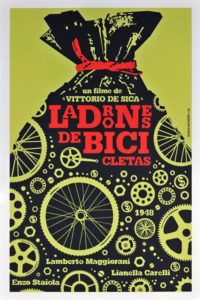"The unica collector" from "Life's user manual" by George Perec
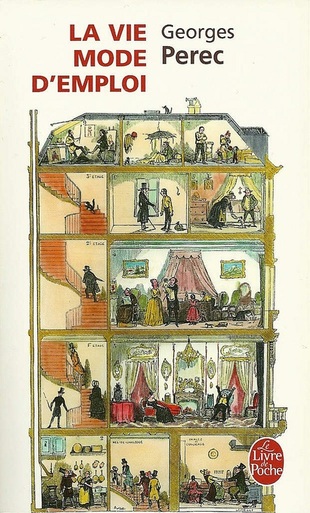 This man – James Sherwood – was the victim of one of the most celebrated swindles of all time: in eighteen ninety-six, a pair of tricksters of genius sold him the vase in which Joseph of Arimathæa gathered the blood of Christ. The woman – an American novelist by the name of Ursula Sobieski – has spent three years unravelling this shady deal for her next book, and her research has finally brought her to visit this block of flats today, for some piece of information to end her investigations.
This man – James Sherwood – was the victim of one of the most celebrated swindles of all time: in eighteen ninety-six, a pair of tricksters of genius sold him the vase in which Joseph of Arimathæa gathered the blood of Christ. The woman – an American novelist by the name of Ursula Sobieski – has spent three years unravelling this shady deal for her next book, and her research has finally brought her to visit this block of flats today, for some piece of information to end her investigations.
Born in Ulverston (Lancashire) in 1833, James Sherwood went overseas very young and became a druggist in Boston. In the early eighteen seventies he invented a ginger-based recipe for lung pastilles. In less than five years, these cough sweets became famous: they were vaunted by a celebrated slogan, “Sherwoods Put You in the Mood”, and illustrated on hexagonal vignettes showing a knight in armour driving his lance through the ghost of influenza personified as a grumpy old man lying flat on his stomach in a fog-enshrouded landscape: the vignettes were distributed in great numbers throughout America and painted on school blotters, on the backs of matchboxes, on soft-drink bottlecaps, on the reverse side of cheesebox lids, and on thousands of little toys and classroom baubles given away free to people who purchased a tin of Sherwoods at specified periods: pen-stands, exercise books, wooden cubes, little jigsaws, small gold-pans (exclusively for Californian customers), photos of leading music hall stars with forged autographs.
The colossal fortune which came with such prodigious popularity did not suffice, unfortunately, to cure the druggist of his affliction: he was kept in a virtually chronic state of lethargy and exhaustion by ineradicable neurasthenia. But at least the fortune allowed him to indulge just about the only activity which helped him forget his troubles: collecting unica.
In the jargon of the rare book, antique, and curio trade, an unicum, as its name implies, is an object which is the only one of its kind. This rather vague definition covers several classes of object; it can mean things of which only one example was ever made, such as the octobass, a monstrous double-bass for two musicians, one at the top of a ladder doing the fingering, the other on a mere stool drawing the bow, or the Legouix-Vavassor Alsatia, which won the Amsterdam Grand Prix in 1913 but was never marketed owing to the war; or it can mean animal species of which only one member is known to exist, like the tendrac Dasogale fontoynanti, the sole specimen of which was caught in Madagascar and is now in the Natural History Museum in Paris, like the butterfly Troides allottei bought by a collector in 1966 for 1,500,000 francs, or like the Monachus tropicalis, the white-backed seal whose existence is known only by a photograph taken in 1962, in Yucatan; or it can mean objects of which only one example now remains, as is the case for several postage stamps, books, engravings, and sound-recordings; or, finally, it can mean objects rendered unique by this or that detail of their history: the pen with which the Treaty of Versailles was initialled and signed, the bread basket into which the head of Louis XVI or Danton rolled, the stub of the piece of chalk Einstein used at his memorable 1905 lecture, the first milligram of pure radium isolated by the Curies in 1898, the Ems Telegram, the boxing gloves Dempsey wore to defeat Carpentier on 21 July 1921, Tarzan’s first underpants, Rita Hayworth’s glove in Gilda, are all classic instances of this last category of unica, the most common but also the most slippery class, when you think that any object whatsoever can always be identified uniquely, and that in Japan there is a factory mass-producing Napoleon’s hat, or Napoleon hats.
Scepticism and passion are the two traits of unica-lovers. Scepticism will lead them to amass an excess of evidence of the genuineness and – especially – of the uniqueness of the sought-after object; passion will lead them into sometimes boundless gullibility. It was with these two traits in mind that the confidence tricksters succeeded in stripping Sherwood of a third of his fortune.
One day in 1896, an Italian workman called Longhi, hired a fortnight earlier to repaint the railings around his estate, came up to the druggist as he was giving his three greyhounds their daily walks, and explained in rather approximate English that three months earlier, he, the workman, had rented a room to a compatriot, a certain Guido Mandetta, who claimed to be a history student; this Guido had gone without warning, leaving behind only an old trunk full of books and papers. Longhi said he’d like to get his money back by selling the books, but was afraid of being swindled, and asked if Sherwood would like to help him. Sherwood didn’t see much to interest him in history textbooks and lecture notes and was about to say no, when Longhi added that the books were mainly old, and in Latin. Sherwood’s curiosity was awakened, and it was not disappointed. Longhi took him back to his house, a big wooden barn, brimful with bambini and masses of mammas, and took him into the little room under the roof where Mandetta had lived; scarcely had he opened the trunk than Sherwood shuddered with surprise and joy: in the midst of a heap of notebooks, loose leaves, pads, newspaper cuttings, and dog-eared books, he discovered an ancient Quarli, one of those sumptuous books with wooden boards and painted edges which the Quarlis printed in Venice between 1530 and 1570 and which have almost entirely disappeared from sight.
Sherwood studied the volume carefully: it was in very poor condition, but there was no doubt that it was genuine. The druggist didn’t hesitate: he pulled two hundred-dollar bills from his billfold and handed them to Longhi; he cut short the Italian uttering jumbled thanks, had the trunk carried over to his house, and began to explore its contents systematically, and as time went on and his discoveries became clearer, his feeling of intense excitement became more and more overwhelming.
The Quarli itself was valuable not just in bibliographic terms. It was the celebrated Vita brevis Helenae by Arnaud de Chemillé, in which the author, after retracing the main episodes in the life of the mother of Constantine the Great, vividly describes the building of the Church of the Holy Sepulchre and the circumstances of the discovery of the True Cross. Inserted into a kind of pocket sewn onto the vellum endpaper were five manuscript sheets, of much later date than the volume but nonetheless very old, probably late eighteenth century: they contained a painstaking, highly detailed compilation enumerating in unending columns of tiny and now almost indecipherable handwriting the locations and specifications of the Relics of the Passion: the fragments of the Holy Cross at St Peter’s, Rome, at St Sophia, at Worms, at Clairvaux, at Chapelle-Lauzin, at the Hospice of the Incurables at Baugé, at St Thomas’s, Birmingham, etc.; the Nails at the Abbey of Saint-Denis, at Naples Cathedral, at S Felice at Syracuse, at SS Apostoli in Venice, at the Church of Saint-Sernin, Toulouse; the spear with which Longinus pierced the Lord’s breast at S Paolo fuori le Mura, at S Giovanni in Laterano, at Nuremberg, and at the Sainte-Chapelle in Paris; the chalice, in Jerusalem; the Three Dice used by the soldiers to gamble for Christ’s Tunic, at Sofia Cathedral; the Sponge Soaked in Vinegar and Gall at S Giovanni in Laterano, at S Maria-di-Trastevero, at S Maria Maggiore, at Saint Mark’s, at S Silvestro-in-capite, and at the Sainte-Chapelle in Paris; the Thorns of the Crown at St Taurin’s, Evreux, Châteaumeillant, Orléans, Beaugency, and at Notre-Dame in Rheims, at Abbeville, Saint-Benoît-sur-Loire, Vézelay, Palermo, Colmar, Montauban, Vienna, and Padua; St Lawrence’s Vase at S Lorenzo in Genoa, Veronica’s Veil (the vera icon) at S Silvestro in Rome; the Holy Shroud, in Rome, Jerusalem, Turin, Cadouin in the Périgord, Carcassonne, Mainz, Parma, Prague, Bayonne, York, Paris, Ayrshire, etc.
The remaining items were no less interesting. Guido Mandetta had collected a whole scientific and historical file on the Relics of Golgotha and most particularly on the most highly treasured of all, the vase Joseph of Arimathæa was said to have used to gather the blood springing from Christ’s wounds: a set of articles by J. P. Shaw, formerly professor of history at Columbia University, New York, reviewed the various legends circulating about the Holy Vase and attempted to identify the elements of reality on which they might be rationally based. Professor Shaw’s analysis was not very hopeful: the tradition that Joseph himself had taken the Vase to England and founded the monastery at Glastonbury to house it in merely rested, according to his demonstration, on a (late?) Christian contamination of the Grail legend; the Sacro Catino at Genoa Cathedral was an emerald goblet, allegedly discovered by Crusaders at Caesarea in 1102, and it was not obvious how Joseph of Arimathæa could have got hold of it; the two-handled Golden Vase kept at the Church of the Holy Sepulchre in Jerusalem, which Bede (who had never seen it) said had contained the Saviour’s Blood, was obviously just an ordinary chalice, mistakenly identified through a scribal error, “contained” having been copied instead of “consecrated”. As for the fourth legend, which said that Gonderic’s Burgundians, allied at Aetius’s instigation to the Saxons, the Alani, the Francs, and the Visigoths in order to halt Attila the Hun, reached the Catalaunian Fields bearing in front of them – as was customary for the period – their propitiatory relics, including the Holy Vase left to them by the Aryan missionaries who had converted them and which Clovis would take from them thirty years later at Soissons, Professor Shaw rejected this as the least plausible of all, for never would Arianists, who did not recognise the Transubstantiality of Jesus, have thought of worshipping or making others worship his relics.
Nonetheless, Professor Shaw concluded, in the context of the intense movement between the Christian West and Constantinople lasting from the beginning of the fourth to the end of the thirteenth centuries, and of which the Crusades formed but a tiny chapter, it was not inconceivable that the True Vase could have been preserved, in so far as it had been, from the day after the Burial, an object of the greatest veneration.
When he’d finished going through all of Mandetta’s material exhaustively – even though most of the documents remained undecipherable – Sherwood was convinced that the Italian had tracked down the Holy Vase. He put an army of detectives on his trail, but they came up with nothing, since Longhi hadn’t even been able to give a correct description of the man. He then decided to turn to Professor Shaw for advice. He found his address in the latest edition of Who’s Who in America and wrote to him. A reply arrived one month later: Professor Shaw had just returned from a voyage; kept busy by final examinations, he could not come to Boston but would willingly see Sherwood at his place in New York.
The interview therefore took place at J. P. Shaw’s New York home on 15 June 1896. Sherwood had barely mentioned his discovery of the Quarli when Shaw interrupted him:
“It’s the Vita brevis Helenae, isn’t it?”
“That’s right, but …”
“There’s a pocket, on the rear endpaper, containing a list of all the Relics of Golgotha?”
“Indeed there is, but …”
“Well, my dear fellow, I’m delighted to make your acquaintance at last! That’s my copy you’ve found! As far as I know there aren’t any others. It was stolen from me two years ago.”
The professor rose, hunted through a filing cabinet, and returned with a few crumpled sheets in his hand.
“Look, here’s the announcement I had put in specialist journals and sent to every library in the country:
STOLEN on 6 April 1893 from the house of Professor J. P. SHAW in New York, N.Y., United States of America, an extremely rare copy of VITA BREVIS HELENAE by Arnaud de Chemillé. Venice, Quarli, 1549, 171 num.pp., 11 unnum.pp. Badly damaged wooden press-boards. Vellum endpapers. Painted edges. Two of three hasps intact. Numerous mss. annotations in margins. INSET OF 5 MANUSCRIPT SHEETS BY J. B. ROUSSEAU
Sherwood had to return to Shaw the book he thought he’d got so cheaply. He turned down the two hundred dollars’ compensation which Shaw offered. In return he asked the historian to help him exploit Mandetta’s copious file of information. Now it was the Professor’s turn to refuse: he was entirely absorbed in his work at the University, and above all he did not believe that he would learn anything from Mandetta’s papers: he had been studying the history of the relics for twenty years, and he didn’t think anything of the slightest importance had escaped him.
Sherwood insisted, and in the end offered the Professor such a fabulous sum of money that he got him to consent. A month later, when the examination season was over, Shaw settled in Boston and began to sift through the innumerable piles of notes, articles, and press cuttings left by Mandetta.
The inventory of the Relics of Golgotha had been made in 1718 by Jean-Baptiste Rousseau, who, after being expelled from France as a result of the murky affair of the Café Laurent couplets, had taken service as secretary to Prince Eugene of Savoy. The previous year this Prince, fighting under the colours of Austria, had recaptured Belgrade from the Turks. This victory, coming after several others, put an end for a while to the long-drawn-out conflict setting Venice and the Hapsburgs against the Ottoman Empire; peace was signed on 21 July 1718 at Passarowitz, with Britain and Holland acting as mediators. It was on the occasion of the peace treaty that Sultan Ahmed III, hoping to curry favour with Prince Eugene, sent him a whole collection of major relics originating in a hiding place in one of the walls of St Sophia. The fact of this dispatch is known from a letter from Maurice de Saxe – who’d put himself under the Prince’s orders to learn the profession of arms, which he actually already knew better than anyone – to his wife, the Countess of Loben: “… a blade of the Holy Spear, the Crown of Thorns, the thongs and rods of the Flagellation, the paltry Cloak and Reed of the Passion, the Holy Nails, the Very Holy Vase, the Sindon, and the Very Holy Veil”.
No one knew what had become of these relics. No church of the Austro-Hungarian Empire or elsewhere ever prided itself in having any of them amongst its treasures. The cult of relics, which had flourished throughout the Middle Ages and the Renaissance, had then begun to weaken considerably, and it is reasonable to assume that it was in order to deride them that Prince Eugene had asked Jean-Baptiste Rousseau to catalogue all those relics that were still worshipped.
However, less than fifty years later, the Very Holy Vase cropped up again: in a letter in Italian, dated 1765, the polemicist Beccaria told his protector Charles-Joseph de Firmian that he had visited the famous collection of antiquities left on his death in 1727 by the philologist Pitiscus to the College of St Jerome in Utrecht, of which he had been rector, and mentioned in particular “one sigillated earthenware vase which was said to be the one from the Calvary”.
Professor Shaw did of course know Jean-Baptiste Rousseau’s catalogue, of which the original was inset in his Quarli, and Maurice de Saxe’s letter. But he didn’t know Beccaria’s letter: it made him jump for joy, for the description “sigillated earthenware vase” was, finally, support for the theory he’d always held, but never dared to publish: the Vase in which Joseph of Arimathæa had gathered the Blood of Christ, on the evening of the Passion, had no reason to be made of gold, brass, or bronze, even less cause to be carved from a single emerald stone, but was, quite plainly, earthenware: an ordinary piece of pottery Joseph had bought at the market before going to wash the Wounds of his Saviour. In his enthusiasm Shaw wanted to edit and publish Beccaria’s letter, and Sherwood had all the trouble in the world to persuade him not to, promising him he would have the material for an even more sensational article when they found the Vase!
But first they had to discover the origin of the Utrecht vase. Most of the items in Pitiscus’s collection came from the huge holdings of Christina of Sweden, in whose retinue the philologist had spent many years, but the two catalogues which listed them, Havercamp’s Nummophylacium reginae Christinae and the Musoeum Odescalcum, didn’t mention a vase – fortunately enough, for Queen Christina’s collections had been assembled long before Ahmed III had dispatched the Holy Relics to Prince Eugene. Therefore it had to be a later acquisition. In so far as Prince Eugene had not distributed the Relics to churches, and hadn’t kept them – they didn’t appear in the descriptions of his own collections, which were known – it was not unreasonable to think he had given them as gifts to his followers, or at least to those of his followers, of which there were many, who had a lively interest in archaeology, and that he did so at the very time he received them, that is to say during the negotiations for the Peace of Passarowitz. Shaw checked out this crucial detail and discovered that the secretary to the Dutch Delegation was none other than the writer Justus Van Effen, who was not only a pupil but a godson of Pitiscus; that made it obvious that it was Van Effen who had asked for, and been given, the vase, for his godfather, not because it was a devotional object – the Dutch were Reformed and thus profoundly hostile to the cult of relics – but as a museum piece.
Letters flowed thick and fast between Shaw and several Dutch professors, curators, and Head Archivists. Most of them could not provide satisfactory information. Only one, a certain Jakob Van Deeckt, a librarian at the Rotterdam Local Archives, could enlighten them on the history of the Pitiscus Collection.
In 1795, on the founding of the Batavian Republic, the College of St Jerome was closed and turned into a barracks. Most of the books and collections were at that point put into “safe keeping”. In 1814, the former College became the seat of the new Military Academy of the Kingdom of the Netherlands. Its collection, together with those of several other public and private institutions, including the old Artistic and Scientific Society of Utrecht, constituted the founding endowment of the Museum van Oudheden (Museum of Antiquities). But the catalogue of this museum, though it had several entries for sigillated earthenware vases of the Roman period, specified that the objects were all remains found at Vechten, near Utrecht, the site of a Roman camp.
This attribution, however, was controversial, and several scholars reckoned there could have been a confusion when the first catalogue was made. Professor Berzelius, of Lund University, had examined the pottery and demonstrated that attention to the seals, imprints, and inscriptions confirmed that one of them, inventory no. BC 1182, was without doubt much earlier than the others and probably could not have been found at the Vechten excavation, since the camp, as everyone knew, was a late Roman settlement. These results had been summarised in German in an article in Antigvarisk Tidsskrift (Copenhagen), 1855, vol. 22, of which Jakob Van Deeckt attached an offprint to his letter: it contained annotated reproductions of several drawings of the vase in question. But, added Jakob Van Deeckt, by way of conclusion, four or five years previously, that very vase BC 1182 had been stolen. The librarian couldn’t remember exactly how it had been stolen, but no doubt those in charge of the Museum van Oudheden would give him the precise details.
With Sherwood panting, Shaw wrote to the Museum’s Curator. A reply came in the form of a long letter accompanied by cuttings from the Nieuwe Courant. The robbery had happened on the night of 4 August 1891. The museum, situated in Hoogeland Park, had been substantially refurbished the previous year, and not all the rooms had been reopened to the public. A student from the Fine Art School, by the name of Theo Van Schallaert, had obtained permission to copy some antiques, and was at work in one of these rooms, which, since they were not open, had no guard on duty. On the evening of 3 August he managed to get himself locked in the museum, and let himself out simply by breaking a windowpane and sliding down a drainpipe, bearing the precious Vase. Searches made the next day at his dwelling proved the deed had been premeditated, but all the efforts made to track him down were in vain. The matter was not yet covered by the statute of limitations and the Curator ended his letter by requesting in his turn any information which might lead to the arrest of the thief and to recovery of the antique vase.
For Sherwood there was not a shadow of doubt that this vase was the Very Holy Vase and that Mandetta the history student and Theo Van Schallaert the fine-art student were one and the same person. But how could he find him? Mandetta had disappeared a full six months ago, and the detectives hired by Sherwood were still searching for him fruitlessly on both sides of the Atlantic.
It was then that a sublime coincidence occurred. Longhi, the Italian workman who’d been landlord to the fraudulent Mandetta-Van Schallaert, called on Sherwood. He had been working at New Bedford, and, three days before, he’d seen the student coming out of the Hotel Xiphias. He’d crossed the pavement to speak to him, but the man had got into a buggy and driven off at a gallop.
The very next day Sherwood and Shaw were at the Xiphias. Speedy enquiries identified Mandetta as the person who had checked in under the name of Jim Brown. He hadn’t left the hotel and he was even at that moment in his room. Shaw introduced himself, and Jim Brown-Mandetta-Van Schallaert raised no objection to seeing him with Sherwood and giving some explanations.
When he was a student in Utrecht he’d discovered in a secondhand bookshop an unbound copy of the Correspondence of Beccaria, whom he knew of course as the author of the famous treatise On Crimes and Their Punishment, which had revolutionised penal law. He had bought the work and taken it home, where, yawning a little and despite his rather summary command of Italian, he had read through until he came upon the letter narrating the visit to the Pitiscus Collection. Now, his great-grandfather had been a pupil at the College of St Jerome. Fascinated by this succession of coincidences, Schallaert decided to track down the Calvary Vase, and, having found it, decided to steal it. The plan came off, and at the time when the museum guards were discovering the theft, he was already on board a scheduled steamer on the Amsterdam–New York line.
Of course, he reckoned on selling the vase, but the first antique dealer he offered it to laughed in his face, demanding better authentication than a vague lawyer’s letter and some catalogue snippets. Well, even if it really was the one Berzelius described, and most certainly the one Beccaria had seen, the prior provenance of the vase remained problematic. In the course of his research Schallaert had heard of Professor Shaw – you are, he told him, a leading light in the Old World as in the New, which made the Professor blush – and after conscientiously reading up everything to be found in libraries and discreetly mingling in the Professor’s lectures and seminars, he let himself into his home during a party celebrating his appointment to the Headship of the Department of Ancient History, and purloined the Quarli. Thus, although he had started from a different point, he, like Shaw and Sherwood, had managed to reconstitute the history of the Vase. So, with the evidence to support his claim, he began a tour of the United States, beginning in the South, where he’d heard it said he would find wealthy customers. Indeed, a New Orleans bookseller had introduced him to a fabulously wealthy cotton planter who had offered him $250,000, and he’d come back to New Bedford to fetch the Vase.
“I’ll offer double”, Sherwood said simply.
“Impossible, I’ve given my word.”
“For another two hundred and fifty thousand dollars you could break it.”
“Out of the question!”
“I’ll make it a million!”
Schallaert seemed to waver.
“How do I know you’ve got a million dollars? You haven’t got it in your pocket!”
“No, but I can get the cash together by tomorrow evening.”
“How do I know you won’t have me arrested before then?”
“And how do I know you’ll really give me the vase?”
Shaw interrupted and proposed the following arrangement. Once the authenticity of the Vase had been proved, Sherwood and Schallaert together would deposit it in a bank safe. They would meet again a day later, Sherwood would give the million dollars to Schallaert, and they would proceed to open the safe.
Schallaert found the idea ingenious, but refused to use a bank, and stipulated a secure and neutral meeting place. Once again Shaw came to their help: he knew the President of Harvard University, Michael Stefensson, and knew he had a safe in his office. Why not ask him to handle this delicate exchange operation? He would be asked to be discreet and anyway there was not even any reason why he should know what would be in the bags to be exchanged. Sherwood and Schallaert accepted. Shaw rang Stefensson on the telephone and got him to agree.
“Don’t do anything you might regret!” Schallaert then said, suddenly. He took a small pistol from his pocket, stepped backwards to the rear of the room, and added, “The vase is under the bed. Look but take care!”
Shaw pulled a little suitcase out from under the bed and opened it. Inside, protected by thick wadding, was the Very Holy Vase. It looked exactly like Berzelius’s drawings of vase BC 1182, and the inscription was clearly marked in red ink inside the base.
That very evening they reached Harvard, where Stefensson awaited them. The four men went into the President’s office, and he opened the safe and placed the case in it.
Next evening the four men met again. Stefensson opened his safe, took out the case, and gave it to Sherwood. The latter handed Schallaert a travelling bag. Schallaert checked the contents quickly – two hundred and fifty bundles of two hundred twenty-dollar bills – then greeted the three men with a little nod of his head and was gone. “Gentlemen,” said Shaw, “I think we’ve earned ourselves a glass of champagne.”
It was getting late and after a few glasses Shaw and Sherwood gratefully accepted the President’s offer of hospitality. But when Sherwood woke in the morning he found the house entirely deserted. The case was on a low table by his bedside, and the Vase was in the case. The rest of the residence, which he’d seen the previous night full of servants, amply lit, richly furnished with objets d’art of all kinds, turned out to be a suite of empty dance halls and lounges, and the President’s office was merely a sparsely furnished little room, probably a cloakroom, entirely devoid of books, safe, and pictures. Sherwood later learnt that he had been received in one of those halls which the many alumni associations – Phi Beta Rho, Tau Kappa Pi, etc. – hire for their annual dinners, and that it had been booked two days earlier by a certain Arthur King, on behalf of a supposed Galahad Society, of which, of course, no trace could be found anywhere.
He called Michael Stefensson and in the end got a voice on the line that he’d never heard before, and certainly not last night. President Stefensson did, in fact, know Professor Shaw by name, and he was rather surprised that he was already back from directing his excavations in Egypt.
* * *
The massed mammas and the bountiful bambini at Longhi’s house, like the servants at Stefensson’s residence, were hired walk-ons.
Longhi and Stefensson were accomplices with specified roles, but knowing only very vaguely the inside story of the coup that Schallaert and Shaw, whose true identities remain unknown, had stage-managed from start to finish. Schallaert, a talented forger, had fabricated Beccaria’s letter, Berzelius’s article, and the cuttings from the Nieuwe Courant. From Rotterdam and Utrecht he’d sent the forged letters of Jakob Van Deeckt and the Curator of the Museum van Oudheden, before coming back to New Bedford for the final scene and denouement of the plot. The other items, that is to say Shaw’s articles, the Vita brevis Helenae, Jean-Baptiste Rousseau’s catalogue, and the letter from Maurice de Saxe, were authentic, unless the latter two items were forgeries from some much older swindle: the imposter Shaw had found these documents – and that was where it had all started – in the library of the Professor whose absolutely aboveboard tenant he had been since the latter’s departure for the land of the Pharaohs. As for the vase, it was a slightly dissimulated gugglet of sorts, bought at a souk at Nabeul (Tunisia).
James Sherwood is Bartlebooth’s great-uncle, his maternal grandfather’s brother or, equally, his mother’s uncle. When he died, four years after this affair, in 1900 – the year of Bartlebooth’s birth – the remainder of his huge fortune came to his sole heiress, his niece Priscilla, who had married a London businessman, Jonathan Bartlebooth, eighteen months previously. The estates, the greyhounds, horses, and collections were disposed of in Boston, and the “Roman vase with descriptions by Berzelius” went for two thousand dollars all the same: but Priscilla brought some pieces of furniture to England, amongst them a mahogany study set in the purest English Colonial style, comprising a desk, a filing cabinet, an easy chair, a revolving and rocking chair, three straight-backed chairs, and the revolving bookcase beside which Sherwood had been photographed.
This bookcase, like the other furniture and some other items from the same source, including one of the unica so passionately sought after by the druggist – the very first cylinder phonograph built by John Kruesi to Edison’s design – is now in Bartlebooth’s apartment. Ursula Sobieski hopes she will be able to examine them and find in them the document that would allow her to conclude her lengthy investigations.
As she pieced the affair together and studied the accounts of it made by some of the actors (the “real” Professors Shaw and Stefensson, and Sherwood’s private secretary, to whose diary the novelist had had access), Ursula Sobieski often came to wonder whether Sherwood hadn’t guessed from the start that he was being mystified: whether he had paid up not for the vase but for the staging, allowing himself to be hooked by the bait, responding to the programme scripted by the so-called Shaw with an appropriate combination of gullibility, doubt, and enthusiasm, and finding such play-acting a more powerful palliative for his melancholy than the search for a real treasure would have been. This is a tempting theory and would fit Sherwood’s character quite well, but Ursula Sobieski hasn’t yet managed to find solid evidence for it. All there is to vindicate her theory is the fact that James Sherwood doesn’t appear to have minded at all about losing a million dollars, a fact perhaps explained by a news item dated two years after the end of the affair: in 1898, in Argentina, a syndicate of forgers was arrested whilst attempting to pass off huge quantities of twenty-dollar bills.
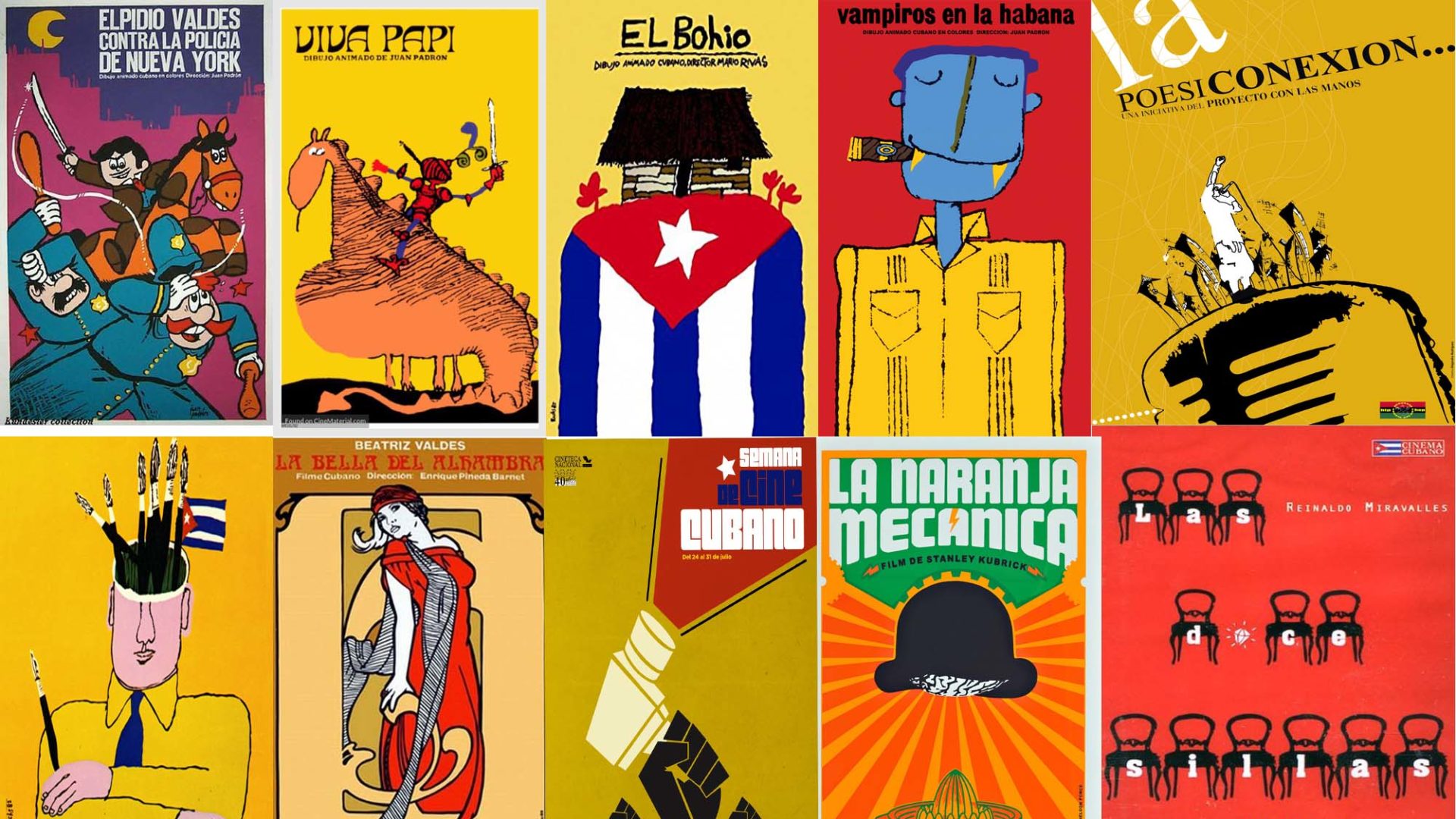
 The Hit (Frears, 1984)
The Hit (Frears, 1984) Frankenstein (1931, dir. James Whale)
Frankenstein (1931, dir. James Whale) Ashes and Diamonds (1958, Andrzej Wajda)
Ashes and Diamonds (1958, Andrzej Wajda) The Tree of Wooden Clogs(1978, E.Olmi)
The Tree of Wooden Clogs(1978, E.Olmi) 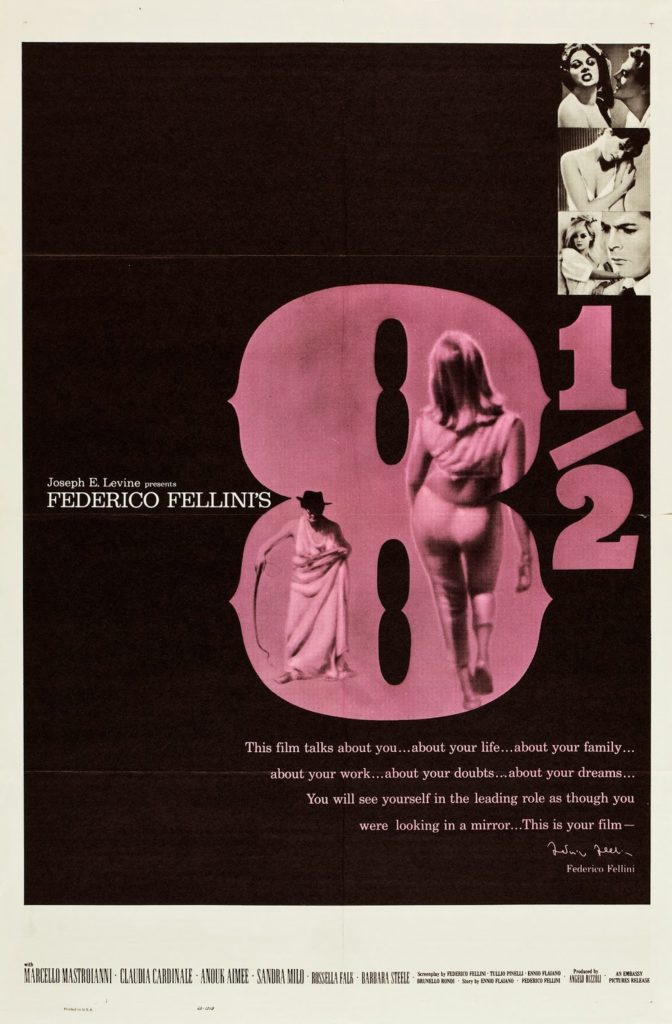 8 1/2 (1963, dir. Federico Fellini)
8 1/2 (1963, dir. Federico Fellini)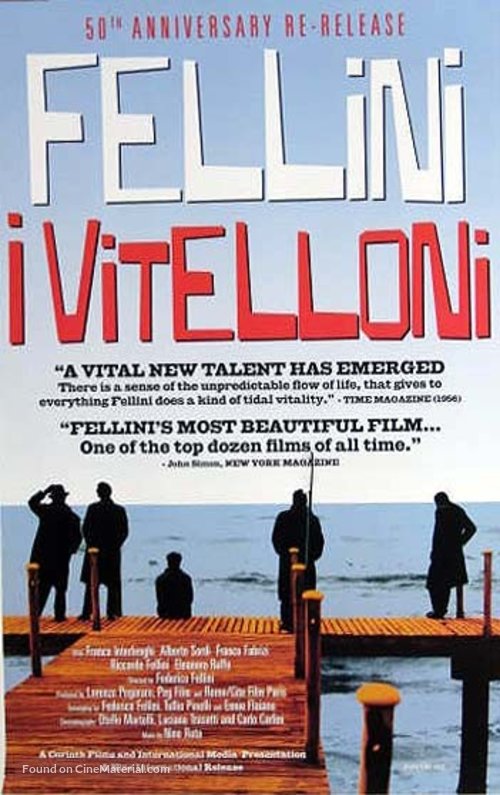 1. I Vitelloni (Fellini, 1953)
1. I Vitelloni (Fellini, 1953)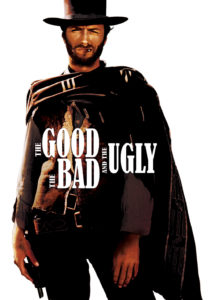 The Good, the Bad and the Ugly (1966, dir. Sergio Leone)
The Good, the Bad and the Ugly (1966, dir. Sergio Leone)